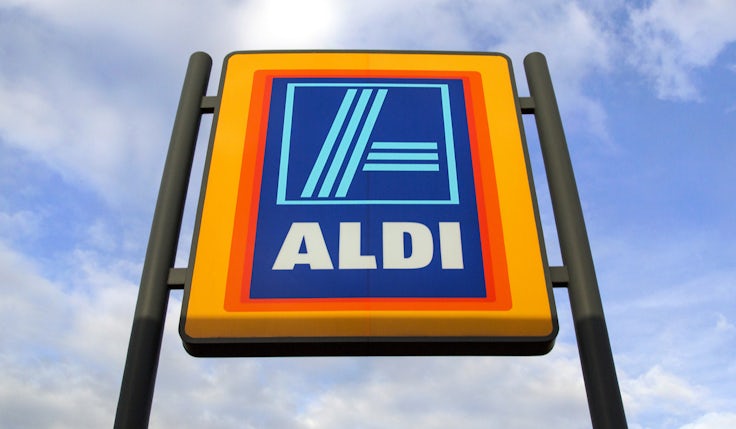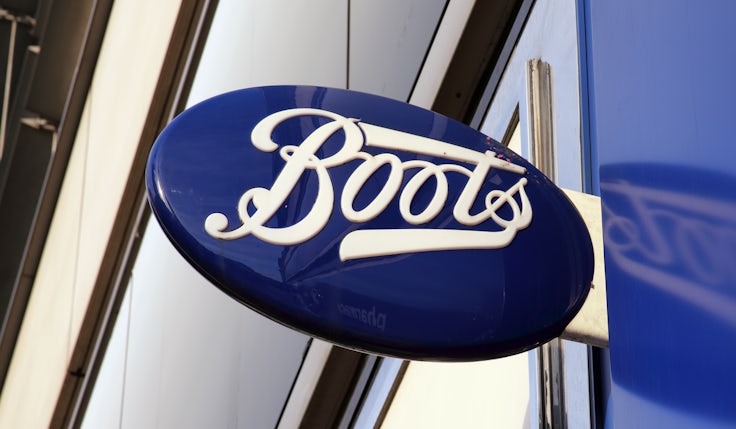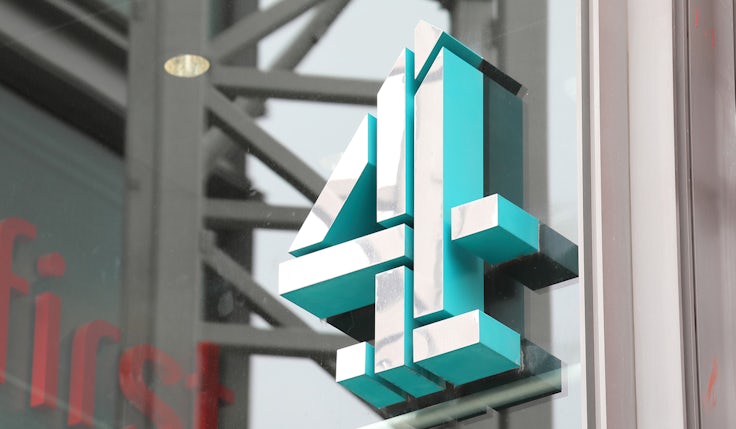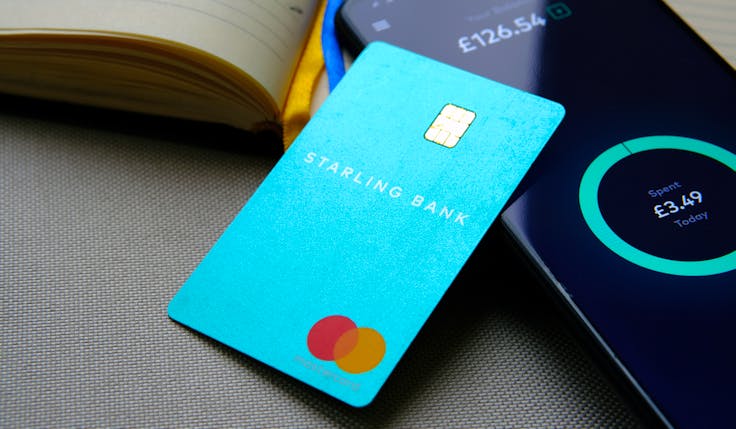Revealed: Marketing Week Awards 2022 Brand of the Year shortlist
Six brands have been shortlisted for the 2022 Marketing Week Awards Brand of the Year, with the winner to be announced in November.
 Aldi, Boots, Channel 4, LinkedIn, Sage and Starling Bank have been shortlisted for the Marketing Week Awards Brand of the Year prize for 2022.
Aldi, Boots, Channel 4, LinkedIn, Sage and Starling Bank have been shortlisted for the Marketing Week Awards Brand of the Year prize for 2022.
These six brands were chosen from a long list put together by the Marketing Week editorial team. Brands were selected based on performance, agility, marketing strategy and innovation over the past year.
The winner will be chosen based on a combination of a public vote and the views of our judging panel of senior marketing leaders. This year’s jury includes Margaret Jobling, group CMO at NatWest Group, Jack Hinchliffe, CMO at KFC, L’Oréal’s chief digital and marketing officer Lex Bradshaw-Zanger, Mark Evans, marketing director at Direct Line Group and GiffGaff CMO Sophie Wheater.
Russell Parsons, editor-in-chief of Marketing Week and the Festival of Marketing, says: “One of the highlights of Marketing Week’s year is revealing the shortlist for Brand of the Year and we have six excellent candidates that demonstrate best practice. From brand management excellence, to innovation and resilience. From employer branding innovation to success in challenging circumstances, our shortlist has it all. I look forward to hearing your thoughts and those of our judges before deciding on a winner.”
The winner will be revealed at a ceremony on 3 November.
Click here to vote for your Brand of the Year
The shortlist for Brand of the Year
Aldi
 Aldi has had a stellar 12 months, outpacing rivals and increasing its value. It is on the verge of taking over from Morrisons as the UK’s fourth biggest supermarket. In the 12 weeks to 10 July, it had a 9.1% share of the market, compared with Morrisons’ 9.4%. Its growth is far ahead of everyone else in a category that saw everyone but Tesco lose their share of spend in the period.
Aldi has had a stellar 12 months, outpacing rivals and increasing its value. It is on the verge of taking over from Morrisons as the UK’s fourth biggest supermarket. In the 12 weeks to 10 July, it had a 9.1% share of the market, compared with Morrisons’ 9.4%. Its growth is far ahead of everyone else in a category that saw everyone but Tesco lose their share of spend in the period.
It’s committed to expansion, announcing a £1.3bn investment in an ambitious store building plan last year to accelerate its share of the market.
Breaking into the ‘top four’ would be the culmination of a sustained period of success for the German discounter.
Its slavish devotion to keeping costs low has resonated with customers living in economic uncertainty. But its investment is not contained to stores and staff. It has been effectively building a brand that is more than just a cheap option.
Its Christmas marketing activity has helped elevate brand and business. In 2016, the brand launched a Christmas campaign, starring Kevin the Carrot, that helped create a link with an occasion Aldi’s customers loved but shopped elsewhere for. The campaign had an instant impact, helping deliver 1 million new shoppers and a 15.1% sales increase. The campaign continues to perform five years on from launch, scooping the most effective festive ad crown in 2021, according to Kantar, and helping deliver what Aldi claimed was its “best ever” Christmas trading.
Its entertaining marketing tactics are not confined to film. Its social media activity has also won plaudits. Its copyright spat with Marks & Spencer, which accused Aldi of trademark infringement over its Colin the Caterpillar cake, took place in the high court but also on social media where Aldi swung behind its own Cuthbert the Caterpillar cake and character. Multichannel activity carrying the #freecuthbert hashtag generated millions of impressions, considerable engagement and lots of positive sentiment.
Agile use of digital marketing communications allied with consistent and creative use of TV and other traditional media have helped, but it is its ability to hold down costs that has bolstered the value of its brand at a time when many people are struggling with the cost of living. Aldi increased its value by 20% to $21bn according to Kantar, returning it to Kantar’s Top 100 most valuable brands list in 2021.
Click here to vote for your Brand of the Year
Boots
 Boots has undergone something of a makeover over the past year, with the launch of its ‘Feel Good as New’ campaign marking the beginning of a new era for the brand.
Boots has undergone something of a makeover over the past year, with the launch of its ‘Feel Good as New’ campaign marking the beginning of a new era for the brand.
With the ultimate objective of driving reappraisal, the repositioning of the high street stalwart, which is being led by CMO Pete Markey, has helped to propel the brand forward.
The campaign, which centred on a 30-second TV ad, led to Boots growing both its market share and moving its brand health metrics above original targets, as well as delivering an ROI of £2 for every £1 spent. It also helped boost traffic to the Boots website, which saw a 700% rise in the number of visitors to the Health Hub alone, while overall searches for the brand jumped 15%. Perhaps not surprising given Feel Good as New was revealed as the most effective TV ad in June last year by Kantar’s The Works study, scoring within the top 20% of all UK ads for branding.
Boots’ parent company, Walgreens Boots Alliance, even credited its role in driving a 15% increase in comparable retail sales in the UK in its fourth quarter financial results. It also got the seal of approval from Mark Ritson who described it as a “perfect exemplar” of mixing mass marketing with targeting.
The success of the campaign led to the budget for this year’s follow up ‘Summer Better Be Ready’ activity being backed by a 20% increase, underscoring the business’s belief in marketing.
Elsewhere, Boots has also been raising its brand profile through its sponsorship of ITV’s Love Island. The tie-up in 2021 led to a “good” sales uplift on key brands featured in the show, with an 18% revenue boost online and 7% in stores, which encouraged the brand to renew its sponsorship for the most recent series.
Innovation is also high on the agenda for Boots, which became the first brand to trial shoppable TV with Sky via QR codes for its Christmas ad. According to Boots, QR scan completion rates for its ‘Bags of Joy’ ad hit 37%, 23% higher than the test pilot studies. The company credits the shoppable format with helping to bring customers back to Boots, as 45% of customers who bought Christmas gifts from Boots last year did not shop with the retailer for gifts in 2020.
Boot also launched a media agency towards the back end of last year, which offers brands the chance to take advantage of the first-party data it collects from its more than 17 million Advantage Card holders. Boots Media Group provides brands with access to Boots-owned channels online and in-store, and is central to its wider vision of using closer brand relationships to re-energise the image of Boots.
Click here to vote for your Brand of the Year
Channel 4
 Despite the uncertainty regarding its future ownership, 2021 was a standout year for Channel 4, with the broadcaster breaking records for its overall revenue growth.
Despite the uncertainty regarding its future ownership, 2021 was a standout year for Channel 4, with the broadcaster breaking records for its overall revenue growth.
Channel 4 delivered corporate revenue of more than £1bn for the first time in its 40-year history, a 25% increase on 2020. The broadcaster also made a “record” surplus of £101m, surpassing its previous record the year prior and marking its first three figure surplus since launching in 1982. At £272m, Channel 4 also has its highest cash balance in over a decade.
Its on demand platform All 4 also recorded another record-breaking performance, with 1.5 billion views, an increase of 21% since 2020. The broadcaster had aimed to increase viewing on its on demand platform to 2 billion per year by 2025, which it is now well on the way to achieving.
Meanwhile, Channel 4’s digital advertising revenue grew by a “huge” 40% last year and its share of the digital ad market hit 35%, ahead of the 28% for linear TV advertising. Digital advertising now makes up 19% of Channel 4’s revenues.
This is all part of Channel 4’s Future4 strategy, which it first outlined in November 2020, with targets for digital transformation and diversification.
Elsewhere, the channel has been ramping up its commitment to diversity and inclusion, both internally through a number of key hires and new policies, and externally. Through the launch of its ‘Altogether Different’ campaign, Channel 4 looked to showcase the collective differences of people in the UK. CMO Zaid Al-Qassab said at the time the campaign “reflects why Channel 4 was created – to authentically represent unheard voices and the cultural diversity of the UK”.
The channel’s long-term commitment to diversity and inclusion was also evident with the success of last summer’s Paralympic Games coverage, which was viewed by a third of the UK population. It also led to the channel seeing its biggest weekly share of TV viewing since 2016, while its ‘Super. Human’ campaign reached 81% of the UK population.
Channel 4 has also been continuing to broaden conversations around menopause. Not only was it the first UK media brand to introduce a dedicated menopause policy in 2019, it has also been raising awareness beyond the business with its Davina McCall-fronted documentary ‘Davina McCall: Sex, Myths and the Menopause’. Then in April this year, Channel 4 named Tena’s ‘#LastLonelyMenopause’ campaign the winner of its annual diversity prize, the theme of which on this occasion was ageism.
For the next iteration of the award, the channel is asking brands to tackle the lack of authentic representation of disabled people in advertising.
Click here to vote for your Brand of the Year

For LinkedIn, 2022 has seen the professional networking platform seek to champion equity for women in the working world.
This approach is fuelled by what LinkedIn describes as the “disproportionate” impact Covid has had on women’s careers. The platform’s research reveals women’s employment declined by 4.2% globally during the pandemic, equivalent to 54 million jobs. In comparison, men’s employment was found to have declined by 3%.
The LinkedIn data also found 44% of women of childbearing age say the pandemic has made them more likely to give up work while raising children. Indeed, stats published by the networking platform last year revealed nearly two-thirds of female marketers (60%) have either left the industry or seriously thought about doing so – either permanently or temporarily – during Covid.
Fired up by a mission to ‘Make work work for women’, LinkedIn forged a global partnership with International Women’s Day in March, focused on tackling the systemic barriers holding back women’s careers.
Then in April, the brand launched ‘#FlexibleIs’, an integrated campaign running across the UK, France, Germany, India and Australia aimed at challenging the biases around career flexibility. To support the campaign, LinkedIn introduced a ‘career break’ option, giving users a new way to reflect breaks from work on their LinkedIn profile.
Given the focus on championing female talent, the natural next step was for the business to ink its first sports sponsorship deal, becoming national sponsor of this summer’s Women’s Euros. The partnership was inspired by the “huge increase” in the number of sporting professionals sharing their stories on the platform.
At the heart of LinkedIn’s ‘#FollowInHerFootsteps’ Euros campaign was a partnership with Carol Thomas, the first captain to lead England to a Women’s Euros in 1984. The brand created content with Thomas, who walked the 30-miles from Crewe’s Mornflake Stadium (the site of the first Euros game in 1984), to Old Trafford where the 2022 tournament kicked off to a sold-out crowd.
Running across outdoor and digital channels, the campaign launch film also featured rare archival footage of women’s football through the generations.
As part of the campaign push, LinkedIn worked with several players to help build their profiles, offering best practice tips, content ideas and one-to-one sessions.
Reflecting on the Lionesses’ historic win, UK head of brand marketing Zara Easton claimed LinkedIn “couldn’t be prouder” of the Euros partnership, reaffirming the company’s commitment to shining a light on female trailblazers.
The focus on workplace equity and wider sponsorship strategy appears to be paying off from a financial perspective. LinkedIn’s revenue rose 26% to $768m (£629m) in the fourth quarter to 30 June, growth parent company Microsoft attributed in large part to the platform’s marketing and talent solutions businesses.
Click here to vote for your Brand of the Year
Sage

Sage sits among the best B2B brands on its commitment towards long-term brand building. While many B2B businesses eschew brand in favour of short-term sales and demand generation, this year Sage has invested hard behind marketing, with a brand refresh, its first-ever purpose statement, and a string of new customer propositions.
The refresh – and subsequent TV, outdoor and digital campaign – recognises that decisions around software and payroll systems for small and medium businesses are actually “very emotional”, with leaders making choices that ultimately impact their company and employees.
For CMO Cath Keers, there is no B2B and B2C in marketing. “For me, it’s actually about human to human. People buy from people,” she told Marketing Week as the refresh was unveiled.
The new campaign and platform, ‘Helping business flow’, replaced the financial tech firm’s former brand platform ‘Boss It’, which also involved a mass reach above-the-line campaign. Keers said going big on brand has paid off for Sage, and warned that B2B marketers “underestimate” its power in decision making both in the present and future.
Indeed, in the company’s half year results to March 2022, CEO Steve Hare credited a £25m boost in sales and marketing investment with driving a 21% increase in revenues for Sage Business Cloud and increasing levels of new customer acquisition. Hare promised to continue investing to “accelerate growth”, and to spend more on both brand and digital marketing to raise awareness.
More recently, CFO Jonathan Howell credited continued investment in sales, marketing and innovation with supporting a 10% uplift in recurring revenue over the quarter to June 2022. Customer lifetime value to customer acquisition cost (LTV:CAC), one of Sage’s primary measures of marketing effectiveness, is showing “good and positive returns” around the world, he said.
Moving forward, Howell said the business will continue to target “aggressive investment” in marketing, and will “dynamically” increase that investment where it has the capacity to do so.
Beyond the new campaign, Sage is partnering with the Rugby World Cup in 2023 and is the official insights partner of cricket tournament The Hundred.
The business has also been investing in its brand marketing team, hiring some well-known talent. Former John Lewis marketing boss Craig Inglis joined the firm in June as executive vice-president of global brand and integrated marketing. Inglis has said he will be on a “mission” to eradicate the term B2B, agreeing with Keers that “it’s all about human to human”.
Whether B2B really is a term that needs binning is up for debate, but either way, Sage’s investment in its brand has put it in good stead for the years ahead, more than earning its place among the B2C brands on this shortlist.
Click here to vote for your Brand of the Year
Starling Bank

Starling Bank is a brand with big ambitions. The digital bank is entering into a new stage of its journey as it prepares to go public, with a shift in its marketing focus.
In 2020, CEO Anne Boden said Starling had become the first digital bank to become profitable on the basis of operating profit. And last month, the bank reported it had achieved its first annual pre-tax profit of £32.1m for the year ending March 2022. Meanwhile revenues at the startup reached £188m, up nearly 93% from 2021.
Starling’s profitability and increasing revenues contrasts with some of its competitors in the fintech sector. Buy-now-pay-later company Klarna recently saw its valuation plummet by 85%. Meanwhile digital banking rival Monzo still has a way to go to reach profitability, after generating losses of £119m for the year ending March 2022.
Having reached profitability, Starling is now eyeing an IPO. Boden said the bank was planning to list its shares publicly in 2023 or 2024.
Looking to the future, Starling has also shifted its marketing efforts to focus on building consideration for the brand. Previously, the bank, founded in 2014, had been concentrated on building awareness. In January, Starling told Marketing Week it had achieved its highest-ever awareness score of 71 during the previous month, and that it was now averaging a score in the 60s.
While building awareness is still important for Starling, it is now also focused on winning consumers over from rivals.
“Certainly in the run up to an IPO, it’s more important than ever that people understand not only about the product itself, but about who we are and what we stand for, why we’re better and why we’re different from other brands in the marketplace,” brand director Rachel Kerrone told Marketing Week in January.
The brand has also shown its willingness to take a stance on issues it feels passionate about. In December, it announced it would be boycotting advertising on Facebook and Instagram until parent company Meta cracked down on financial fraudsters that use its platforms.
Meanwhile, Starling made its sports sponsorship debut with its support of the Women’s Euros, which it chose to do as Kerrone said the tournament aligned closely with its mission of “lifting women up and smashing glass ceilings”. Following the Lionesses’ historic win she added the sponsorship had been a “big success both in terms of brand awareness and in continuing our brand mission”.







Comments